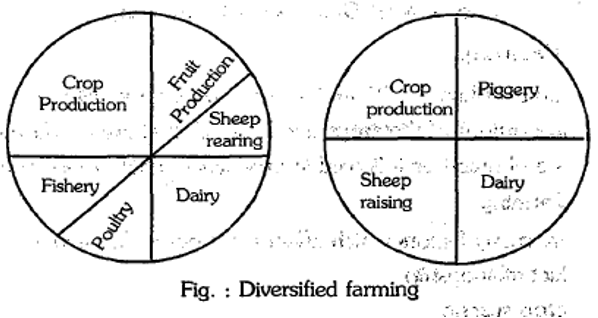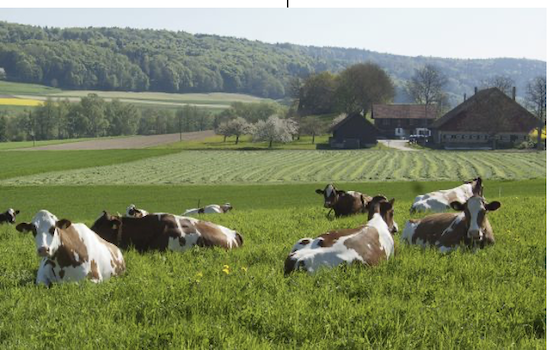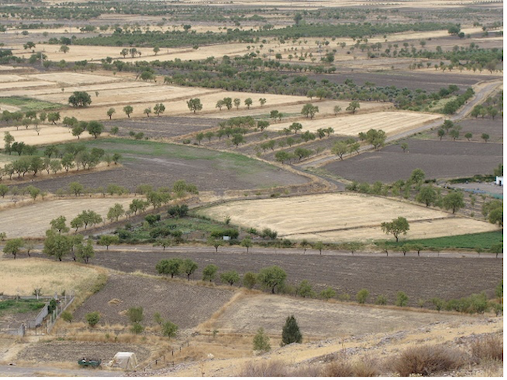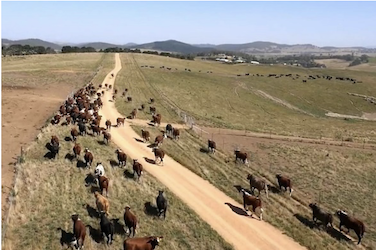👨👨👧👦 Types of Farming
Learn about Types of Farming
- According to Johnson,
“When farms in a group are quite similar in the kinds and proportions of the crops and livestock that are produced and, in the methods, and practices followed in production; that group is described as Type of Farming”.
- There are many factors which affect the types of farming
- Product relationship
- One crop season
- Length of Sowing Season
- Risk and Uncertainty
- Long investment & size of economy
- Business skill
- Relative price of farm product
- Resource of farmer
- Transport facility
- Farm size
- Land Value & Technology Development
- Religious belief & Social background.
- On the basis of methods and practices followed in the production, kinds and proportion of crops and livestock; farming is divided into five types viz.
- Diversified farming
- Specialised farming
- Mixed farming
- Dry farming
- Ranching farming
1. Diversified Farming
- A farm on which the income from a single product is
less than or not equal to 50%(< 50%) of the total farm income is called a diversified or general, farm and such farming is known as diversified farming. - Subsistence farming or marginal farming is a diversified farming.
- One proverb is prevalent related to diversified farming — “A good farmer is one who does not put all the eggs in one basket.”


Advantages
- Better use of
- Land: by suitable crop rotation.
- Labour: more employment of family labour.
- Capital: profitable use of equipment.
- Business risk is reduced due to a crop failure.
- Regular and quicker returns are obtained from various enterprises.
Disadvantages
- Difficulties in marketing without the help of cooperatives.
- Farm supervision is limited due to diversified occupation.
- Better equipping of farm is not possible due to expensive implement and machinery for each enterprise.
- There are chances of undetected leaks in farm business.
2. Specialised Farming
- A farm on which the income from a single product or one enterprise is
more than or equal to 50%(>50%) of the total farm income is called specialized farm and such farming is known as specialized farming. - Following are the conditions for specialized farming:
-
- Where there are special market outlets.
-
- Where economic conditions are fairly uniform for a long period.
-
- Where one enterprise is much affected by abnormal weather conditions.
-

- The nomenclature of specialized farm is done on the name of main crop/special crop or enterprise whose farm income exceeds 50% of the total farm receipt.
- For example, where farming of tea, sugarcane and potato individually contributes more than or equal to 50% of the total farm income, is called tea garden, sugarcane farm, potato farm respectively.

Advantages
- Better use of land e.g. black soil is particularly suitable for cotton growing.
- Better marketing, better grading, processing, transportation and financing of the produce.
- Better farm management and less chance of wastage.
- Less equipment are required.
- Labour efficiency is increased.
- Farming is according to modern scientific methods.
- Efficiency of skill is increased.
Disadvantages
- Greater risk of failure.
- Productive resources i.e. land, labour & capital, are not fully utilized.
- Soil fertility can’t be maintained due to lack of suitable crop rotation.
- By-product of farm can’t be utilised due to lack of livestock
- Farm returns are generally received once in a year.
- General knowledge of farm enterprises become limited.
3. Mixed Farming
- In such type of farming crop production is combined with livestock raising or dairying. In our country livestock are inter-related to agriculture due to partial farm mechanization.
- The livestock enterprise is complimentary to crop production so as to provide a balanced productive systems of farming.
- When the livestock begins to compete with the crop for the same resource, the relationship changed from complimentary to competitive nature. The income from the subsidiary enterprise does not exceed 10% and the subsidiary enterprises utilizes by products.
- Mixed farming is a type of diversified farming where livestock and crop production are inter-dependent on each other.

4. Dry Farming

- Cultivation of crops in regions with annual rainfall of
less than 750 mm.
5. Ranching Farming

- Ranch land is such land where agricultural practices are not adopted i.e. land is not utilised for raising crops but the natural vegetation used for grazing the livestock.
- Who kept such livestock is called Rancher and the farming is called Ranching.
- Ranchers have their no land and make use of such public land.
- Ranch land is present in Australia, America, Tibet, China and hilly tracts of India (i.e. area of Bikaner and Jammu & Kashmir). Australian sheep ranching farm is well known in the world.
- The practice of grazing animals on public land is called ranching. AFO 2021
- According to Johnson,
“When farms in a group are quite similar in the kinds and proportions of the crops and livestock that are produced and, in the methods, and practices followed in production; that group is described as Type of Farming”.
- There are many factors which affect the types of farming
- Product relationship
- One crop season
- Length of Sowing Season
- Risk and Uncertainty
- Long investment & size of economy
- Business skill
- Relative price of farm product
- Resource of farmer
- Transport facility
- Farm size
- Land Value & Technology Development
- Religious belief & Social background.
- On the basis of methods and practices followed in the production, kinds and proportion of crops and livestock; farming is divided into five types viz.
- Diversified farming
- Specialised farming
- Mixed …
Become Successful With AgriDots
Learn the essential skills for getting a seat in the Exam with
🦄 You are a pro member!
Only use this page if purchasing a gift or enterprise account
Plan
Rs
- Unlimited access to PRO courses
- Quizzes with hand-picked meme prizes
- Invite to private Discord chat
- Free Sticker emailed
Lifetime
Rs
1,499
once
- All PRO-tier benefits
- Single payment, lifetime access
- 4,200 bonus xp points
- Next Level
T-shirt shipped worldwide

Yo! You just found a 20% discount using 👉 EASTEREGG

High-quality fitted cotton shirt produced by Next Level Apparel